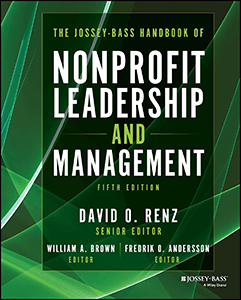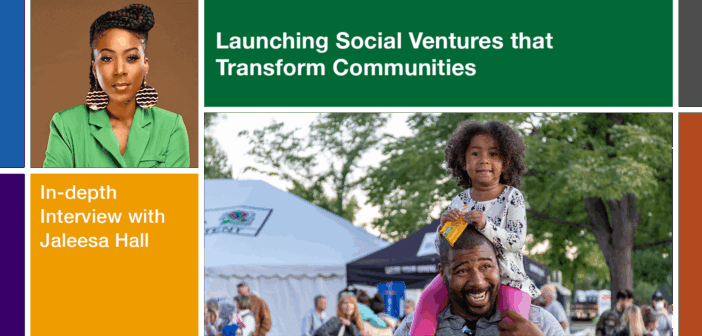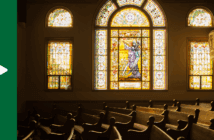What should congregations consider when launching a social venture? In this in-depth interview, Jaleesa Hall shares how Raising A Village grew from a college initiative into a thriving nonprofit serving underserved children and families in Washington, D.C. She offers church leaders practical guidance on launching social ventures, emphasizing discernment, sustainable capacity-building, and the power of partnership and pilot programs.
Watch the interview video, listen to the interview, or continue reading.
Jessica Anschutz: How did Raising A Village come to be?
Jaleesa Hall: Raising A Village started when I was in college at Clark Atlanta University, which is an HBCU in Atlanta, Georgia. I started a student campus-chartered organization by the name of Driven because I got a little tired of doing first-year college things. I was like, “I want to do something more,” and I was really blessed to have friends, to be like, “Yeah, we just want to do something else.” At the time, where the college is located, the community was very blighted, and a lot of my friends had a passion for community service.
Clark Atlanta had a requirement for first-year students to have a certain amount of service hours as part of their graduation requirement, and my friends and I had this innovative idea to create the student organization that first-year students could funnel into to get community service hours for graduation. We would do events to food banks or community cleanups or park cleanups, and as the organization grew, we started to create our own community initiatives. One of our largest initiatives was a mentorship program at the Atlanta Children’s Shelter called the “Driven 2 Succeed Program.”
As I continued to matriculate in college, the organization grew from six of my friends to 100 members strong, and we ended up having corporate sponsorships and all of these things. So, a mentor said, “Jaleesa, do you realize that, though you’re majoring in communications, you are kind of running a pseudo-nonprofit?” I’m approaching my final-year and I’m like, “Yeah, you’re right, I am. I think I like to do this work more.” And he said, “Yeah, you don’t want to break news. You want to make news.” That just made me crumble in tears, because I was like, “Yeah, you’re right. I think this is a part of my calling.”
In the end, I decided to move to Washington, D.C. to get a master’s in public administration and policy at American University, and I did a concentration in nonprofit management. While I was in grad school, I worked at nonprofits and government entities to really understand what public service is and how to lead a public service initiative. Then, after my first master’s, I decided to torture myself and get another one at Wesley Theological Seminary. It was there that I got the community engagement fellowship that gave me $10,000 to start what ended up becoming “Raising A Village Foundation.” So, I always tell folks that Wesley Theological Seminary was my first funder. It helped me do the startup costs and piloting our initiatives, and now we’re about a $1.4 million organization.
Jessica Anschutz: What an incredible story, and I love how your educational experiences led to your vocational experience. I want to invite you to share a little bit more about Raising A Village. What do you all do? What does your life look like in this role?
Jaleesa Hall: First of all, Raising A Village is a D.C. nonprofit. We provide high-impact, high-quality intervention programs and community resources to underserved children and families, and we do that through three core programs. We do that through education programs, health and wellness programs, and arts programs. On the education side, we have a high impact tutoring program, called the “Driven 2 Succeed” program, where we provide both Math and English high-impact tutoring, which means that our tutors go into the school during the day and work with the students who are struggling the most. We do pullout sessions and mirror what is happening in the classroom, but in a smaller, more intimate and controlled setting. We do that in about 15 schools in D.C., and we hire about 70 to 80 college students to serve as our tutors and mentors.
On the health and wellness side, we have a program called “At the Table” that we piloted this year. “At the Table” is our family engagement program, and what we do is provide workshops for parents. We do something called an “Open Table Dinner,” where we bring parents and families together to learn about the resources that are available in D.C. Next year, we are launching our adult education program. Many of our parents didn’t finish high school and want to get their GED, so we’re going to provide them free tutoring to help them do that.
On the arts side, we are planning to launch a program in 2028 that’s about bringing cultural capital into neighborhoods that don’t have the opportunity to have it. The last thing I’ll say, the reason why I focus on education, health and wellness, and the arts, is because thriving communities have those three things. They have good schools. They’re not living in food apartheid, and they have some sense of cultural capital and entertainment. So, what RAV tries to do (Raising A Village, we call it RAV, affectionately) is to go to those communities and journey alongside them in providing resources that are critical to their thriving.
Jessica Anschutz: Thank you so much for this important and transformative work. It’s really exciting to hear about. As you think about what you know now, what do you wish you knew as you were launching RAV?
Jaleesa Hall: My God. Good question. I’m 35 now, and I started it in my twenties. I’m still the same. I haven’t changed entirely, but I am different, and I think I’m better now. So, there are a couple things that I think that I’ve learned. One is the importance of building capacity. In the beginning, it’s easy to focus on the programs and the services, but building internal infrastructure—how an organization operates from operations, to HR, to financial systems, to even legal, (we have a general counsel now), is essential for an organization to become sustainable. When I started, I used $10,000 from Wesley to pilot the program, and rightfully so, but as I began to build and grow, that involved people. I realized that internal systems were important. So, capacity building is critical.
I would also say that diversified funding is a big deal. Especially in the nonprofit space, relying too heavily on one revenue stream is risky, and I think quite dangerous. So, trying to create a balance between fees for service, grants, earned income, and even individual donor support, has also been something that I’ve needed to learn—and to learn fast.
Then I’ll say, lastly, if I could just be transparent, leadership matters. I really needed, and I’m glad that I was able to get it quickly, the right people surrounding me that can serve as a sounding board for me as I continue to think, build, and grow with intentionality. That includes my board of directors, but also, I got some leadership coaching. I try continuously to find ways to learn from people who know better than me, so that I can do this work well and with intention because it is a ministry for me. Though it’s not a formal church, I feel like I do church every day. It includes pastors, businesspeople, public servants—I have a real “village,” if you will, of people who help me try to navigate this space as a leader.
Jessica Anschutz: That’s really wonderful, and I appreciate your vulnerability in sharing and acknowledging those mentors and others who have come along the way to support you in this important work. You referenced social venture, and you use this term throughout your chapter. So, I want to invite you to share: What do you mean by “social venture?”
Jaleesa Hall: A new social venture is basically just an initiative or organization that is designed to address a societal need. That’s really it. It’s mission focused. That venture can take many forms, which includes nonprofits, social enterprises, even hybrid models like B Corps that blend business practices and social impact. But that’s what a new social venture is. It’s just an initiative, an organization that is addressing a societal need in a sustainable and mission-driven way.
Jessica Anschutz: A number of churches may be interested in starting a social venture. What options are available for church leaders who are looking into starting one?
Jaleesa Hall: Let me just be clear: There are so many options out there. In fact, when the sector first began it was the church leading the way with schools and hospitals. Churches, to think back through history, know how to do this work. But there are several pathways that a church in the present-day can explore. For example, they can start a 501(c)(3) nonprofit, separate from the church. The church that I attend, Emory Fellowship United Methodist Church, under Joseph Daniels, did that with the Emory Beacon of Light.
Churches can also create a fiscally sponsored project. Basically, they can create an initiative that is fiscally sponsored by another organization, so that they don’t have to worry about the tax implications. They can also launch a social enterprise. Basically, they can launch a B corporation, a for-profit corporation, that generates revenue while also fulfilling a mission; that can be a soup kitchen, even an ice cream shop, but the revenue goes to some sort of social impact work. There’s also the possibility of expanding an existing ministry. A new social venture can be a ministry that is already taking place in the church, led by volunteers, without having to be formally incorporated. There are so many options, both large and small, that a church can do to start a new social venture.
Jessica Anschutz: Thank you for highlighting some of those. I know a number of congregations are weighing whether to launch a 501(c)(3) organization. What are some of the advantages or disadvantages of doing so?
Jaleesa Hall: There are tradeoffs in this work. Going back to your question about what lessons I’ve learned, I’ve learned that there are tradeoffs to starting a nonprofit versus a for profit. But let me talk about the advantages first. I think that’s important.
In doing a nonprofit, there’s certain tax exemption status that you get, which is really, really important, because grants are usually given to nonprofit entities. So, when you’re a tax-exempt organization, now you’re in the foundation grant game, which is important. You’re eligible for grants; you’re eligible for tax-exempt donations.
But even if your church has a 501(c)(3), maybe there’s another population near you that doesn’t attend, and as a result, they don’t give to your church; but they will give to your nonprofit. So, there’s an advantage there. Moreover, there’s also an amount of public trust and credibility you have when you are formed as a 501(c)(3), and I think public trust, credibility, and goodwill are really important when you’re trying to expand the folks that you reach. Lastly, the ability to build partnerships with the government and other nonprofits in a way that goes beyond the formal church structure, right? In a nonprofit, you have more ability to build bridges and partnerships with other entities, which I think is important.
Some of the disadvantages that a church should keep in mind, or even a lay person that wants to start a new social venture, would be that there are compliance requirements, which means IRS filings and filings with your state or district. That can be tedious. Depending on the kinds of venture you’d need to do, you might have to do some financial compliance requirements as well, like an audit—and audits are long and expensive. I wish I could raise both hands and feet to show you how much I mean that. Audits are serious business.
Moreover, there are also limitations in terms of political and lobbying activities. So, we must be mindful of that, especially as our nation becomes more involved and more politically engaged. I think it’s important for the church to be thinking about that in terms of its limitations. Then lastly, nonprofits must depend on external funding, which can fluctuate. Year to year, one revenue stream may be stronger than another, and with that comes the capacity and ongoing challenge to keep your venture sustainable. So, those are the advantages and disadvantages that I think are important to share off the top of my head.
Jessica Anschutz: Thank you so much for highlighting those. You write in your chapter that its main focus is to help guide the successful development of new social ventures with the recognition that sometimes it is better to not start one at all. How can church leaders discern if it is time to start one, or perhaps if it is not?
Jaleesa Hall: When Louis Faulk, a professor at American University, and I were writing this chapter, we put that in because it’s okay to not start a new social venture. That’s why we try to provide other avenues for people to engage. We’re not trying to stop people from entering in the sector; but we are trying to say that not everyone needs to start something. There is a lot of that language out there right now. But I would say that what a church leader, or even lay leader or lay person, needs to discern is: Number one, is there a genuine community need for this that is not already being done somewhere else? That’s an important question. One of the things that I learned while I was a student at Wesley was a tool called “asset mapping.” This is a tool that helps us think about the gifts and graces that are already happening in a community so that we can make sure that whatever we feel called to is not tampering, but adding to what is already happening there. Is there a genuine community need? Am I duplicating existing efforts or is this unique? Do we have the resources and capacity to sustain what we are feeling called to?
Another question is, instead of starting from scratch, what partnerships can we form? Again, is this a genuine need for the community? Am I duplicating another’s efforts or is what I am feeling pushed to do unique? Do I have the resources and capacity to sustain this, and what partners can I form to really journey alongside us in doing this work? Because community work should never be done in silos. It should always be done together. So, those are the kind of the key questions I would tell folks to chew on.
Jessica Anschutz: I think those are great places to start in the discernment process. You acknowledge in the chapter also that new organizations are more vulnerable to failure than more established organizations. How would you advise church leaders to work so that their efforts have the best possible opportunity for success?
Jaleesa Hall: Oh my God, yes. That’s just a part of business, no matter if it’s a social impact venture or not, right? We’re all susceptible to failure, and I speak from experience here. It’s important to start safe and small. You don’t have to tackle the whole problem in one fell swoop. So, I tell people who want to start ventures of any kind: pilot, pilot, pilot. This is how we learn in experiments in schools, right? You create a hypothesis, you test it, you see what the results are, and then you retool to make the experiment better. So, one of the ways in which you sustain yourself is to pilot and see what the community is saying back to you. Then, use that information to serve as what I call an “ongoing feedback loop” to discern the direction and where you need to go. The pilots will tell you the areas you may need to strengthen, particularly around capacity, people, power, funding, et cetera. So, pilot. Pilot!
The other “P” here is partner. Again, you don’t have to do this work alone. In particular, I think churches have a unique opportunity to create a network of impact. We see it in the DMV area, when there are like five churches on one street. What does it look like to pilot and then partner together? That is how you create sustainability, because we could be sharing resources instead of hoarding them. So, I think that by doing that: starting safe and small, piloting, partnering, and then using those signals as an ongoing feedback loop, it will help you create a path to growth. That’s what happened with RAV. I piloted. I partnered. I got to see the next step of the road, then more—more money, more people, more abilities—and it just ended up growing from there.
Jessica Anschutz: I noticed as you were answering the question, how your earlier answer about RAV, what you’re doing now, and what you anticipate doing in the future models that: starting small, getting something launched, and then taking on the next piece. In thinking about the importance of partnerships, partnerships are critical. How would you advise congregations, church leaders, pastors, and laity to go about cultivating those partnerships?
Jaleesa Hall: That’s in incredibly important. You start by moving from “in” to “out.” Before I formed Raising A Village as a 501(c)(3), I used the partnerships that I had internally—the university and my friends—which then grew. As a leader especially, we want to leave something, and so it is important when we talk about discernment to look at the gifts, graces, and assets to which you’re already connected.
And so, start “in,” and then move “out” from there. For example, I worked with college students, and then when I moved, I was able to pull on their knowledge to figure out how to pilot this in D.C. Once I got into a D.C. public school, I became friends with teachers and principals, who then helped me begin to grow it from there. To me, that’s the organic way to do it. For example, with our education program, we started the bottom up. We started from school to school to school, which means I talked from principal to principal. I didn’t go to the district office and say, “Put me in 15 schools.” I started school to school. Now the district says, “RAV, we need you in more schools.” We created a base of support and community trust. So, if you start “in” and move “out” instead of “top-down,” or “out to in,” that allows you the ability to be able to start authentically. To be able to create buy-in in a way that is important. So, take what’s in your hand, and then cultivate those gifts and graces, and go out from there. Trust me, when you start organically, it usually pops off like wildfire.
Jessica Anschutz: I appreciate that very much, Jaleesa. I want to highlight, again, that your chapter is in the Jossey-Bass Handbook of Nonprofit Leadership and Management. To wrap up, I want to invite you to share some words of hope for church leaders who may be thinking about starting new social ventures.
Jaleesa Hall: Absolutely. Here’s the piece. Launching a new social venture, I’m not going to sugarcoat it. It is challenging; but also, it is rewarding. You don’t have to figure it all out from day one. The key I would want to invite folks to think about is to start with a strong foundation, and then be willing to adapt. Be willing to be contextually nimble. As you do that, find mentorship and collaboration along the way. Because your efforts can create lasting change. I know that as a society, we like things fast, we like things quick; but community work, it’s for the long haul. It’s a marathon. MLK said “the arc bend towards justice,” right? It takes a minute, but we’ll get there. Build a strong foundation, be contextually nimble, collaborate in ways that are authentic, and just keep your hand at the plow and till the soil. You’ll see the fruits that God has placed in your life.
 “Nonprofit Venture Development: Starting New Nonprofits and Social Ventures,” a chapter in the Jossey Bass Handbook of Nonprofit Leadership and Management (Jossey-Bass, 2024). The book is available through the publisher and Amazon.
“Nonprofit Venture Development: Starting New Nonprofits and Social Ventures,” a chapter in the Jossey Bass Handbook of Nonprofit Leadership and Management (Jossey-Bass, 2024). The book is available through the publisher and Amazon.
Related Resources
- Community Partnerships: Moving from a Mindset of Scarcity to Abundance featuring Mahogany Thomas — Watch the Leading Ideas Talks podcast video | Listen to the podcast audio version | Read the in-depth interview
- Creatively Engaging Your Community While Remaining True to Who You Are by Paul Nixon
- 5 Steps to Church Vitality and Turnaround by Tony Hunt
- Doing Good Well, a video tool kit resource from the Lewis Center
If you would like to share this article in your newsletter or other publication, please review our reprint guidelines.






